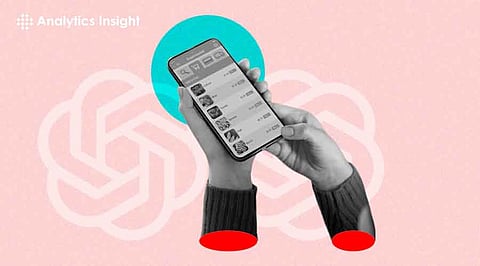

ChatGPT is a powerful language model that can generate natural and engaging conversations based on a given context. It can also produce code snippets, commands, and queries in various programming languages and frameworks.
A grocery app is a dedicated online platform where customers can easily order and have groceries delivered to their doorstep. Unlike general online marketplaces, a grocery app focuses solely on groceries, streamlining the experience. Users save time by not having to call stores and wait for supplies. Instead, they search, add to the cart, pay, and receive doorstep delivery swiftly.
1. Obtain ChatGPT API Key: Create an account on the OpenAI platform and sign up for the ChatGPT API. You will receive an API key and credentials that will allow you to access ChatGPT's backend services.
2. Design User Interface: Create a user interface within the grocery app that allows users to interact with ChatGPT. You can use a chatbot widget, a voice assistant, or a combination of both. You can also customize the appearance, tone, and personality of the chatbot according to your brand identity and target audience.
3. Implement ChatGPT Connection: Use the API key and credentials obtained in step 1 to connect your app to ChatGPT's backend services. You can use any programming language or framework that supports HTTP requests, such as Python, JavaScript, or React Native. You can also use libraries and wrappers that simplify the integration process, such as OpenAI's Python client or ChatGPT's JavaScript SDK.
4. Define ChatGPT Prompts: A prompt is a text input that triggers ChatGPT to generate a response. You can define different prompts for different scenarios and intents, such as greeting, ordering, confirming, suggesting, etc. You can also use variables, parameters, and logic to make the prompts more dynamic and personalized. For example, you can use the user's name, location, order history, preferences, etc. to tailor the prompts and responses.
5. Test and Deploy: Once you have implemented the ChatGPT connection and defined the prompts, you can test the functionality and performance of the chatbot. You can use tools such as Postman or ChatGPT Playground to send requests and receive responses from ChatGPT. You can also use metrics such as accuracy, speed, relevance, coherence, etc. to evaluate the quality of the chatbot. After testing and debugging, you can deploy the chatbot to your app and make it available to your users.
Enhanced User Experience: ChatGPT can provide a natural and engaging user experience, as it can understand the user's intent, context, and emotions, and generate relevant and appropriate responses. It can also handle complex and diverse queries, such as product recommendations, substitutions, discounts, etc. ChatGPT can also use humor, empathy, and personality to build rapport and trust with the user.
Increased Efficiency and Productivity: ChatGPT can automate and streamline the ordering and delivery process, as it can handle multiple requests and tasks simultaneously, without human intervention. It can also reduce errors and delays, as it can verify and confirm the user's order, payment, and address, and update the user on the status and ETA of the delivery. ChatGPT can also provide feedback and support to the user, such as answering FAQs, resolving issues, and collecting ratings and reviews.
Improved Business Growth and Innovation: ChatGPT can help the business grow and innovate, as it can collect and analyze data from the user's interactions, such as preferences, behavior, feedback, etc. It can use this data to provide insights and suggestions to the business, such as improving the product catalog, pricing, marketing, etc. ChatGPT can also help the business create new features and services, such as personalized offers, loyalty programs, etc.
Join our WhatsApp Channel to get the latest news, exclusives and videos on WhatsApp
_____________
Disclaimer: Analytics Insight does not provide financial advice or guidance on cryptocurrencies and stocks. Also note that the cryptocurrencies mentioned/listed on the website could potentially be scams, i.e. designed to induce you to invest financial resources that may be lost forever and not be recoverable once investments are made. This article is provided for informational purposes and does not constitute investment advice. You are responsible for conducting your own research (DYOR) before making any investments. Read more about the financial risks involved here.
